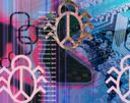New malware plants backdoor on Microsoft web server software
IIS target of hackers looking to enter victim’s infrastructure


Security researchers have discovered malware that can install a backdoor on Microsoft’s web server software Internet Information Services (IIS).
Dubbed IISpy, the malware uses various means to interfere with the server’s logging and evade detection so it can perform long-term espionage.
Researchers said the backdoor has been active since at least July 2020 and has been used with Juicy Potato, a privilege escalation tool.
“We suspect the attackers first obtain initial access to the IIS server via some vulnerability and then use Juicy Potato to obtain the administrative privileges that are required to install IISpy as a native IIS extension,” said researchers.
Investigations unearthed the malware popping up on IIS servers in Canada, the US, and the Netherlands. Researchers suspect more servers have been compromised but said that since it is not common for administrators to use security software on servers, visibility into IIS servers is limited.
IISpy is configured as an IIS extension and can see all the HTTP requests received by the compromised IIS server and shape the HTTP response the server will answer with.
“IISpy uses this channel to implement its C&C communication, which allows it to operate as a passive network implant,” said researchers. Hackers start a connection by sending a special HTTP request to the compromised server. The backdoor recognizes the attacker's request, extracts, and executes the embedded backdoor commands, and modifies the HTTP response to include the command output.
Sign up today and you will receive a free copy of our Future Focus 2025 report - the leading guidance on AI, cybersecurity and other IT challenges as per 700+ senior executives
RELATED RESOURCE

The five essentials from your endpoint security partner
Empower your MSP business to operate efficiently
The backdoor enables hackers to get system information, upload and download data, execute files or shell commands, and more. The malware ignores all legitimate visitors HTTP requests sent to the compromised IIS server — the benign server modules handle these.
IISpy is written using the IIS C++ API and uses instances of IHttpContext, IHttpRequest, and IHttpResponse interfaces to parse HTTP requests and manipulate the HTTP responses.
An anti-logging feature also implements the OnLogRequest event handler – called right before the IIS server logs a processed HTTP request. The backdoor uses this handler to modify the log entries for requests coming from the attackers to make them look like casual requests, according to researchers.
Researchers said organizations that handle sensitive data on their servers should watch for this malware. In particular, organizations using Outlook on the web (OWA) service on their Exchange email servers.
“OWA is implemented via IIS and makes an interesting target for espionage. In any case, the best way to keep IISpy out of your servers is to keep them up to date, and carefully consider which services are exposed to the internet, to reduce the risk of server exploitation,” they added.
Rene Millman is a freelance writer and broadcaster who covers cybersecurity, AI, IoT, and the cloud. He also works as a contributing analyst at GigaOm and has previously worked as an analyst for Gartner covering the infrastructure market. He has made numerous television appearances to give his views and expertise on technology trends and companies that affect and shape our lives. You can follow Rene Millman on Twitter.
-
 Mitre reveals ten worst hardware security weaknesses in 2021
Mitre reveals ten worst hardware security weaknesses in 2021News The list aims to highlight common hardware flaws to help eliminate them from product development cycles
-
 HPE warns of a critical zero-day flaw in server management software
HPE warns of a critical zero-day flaw in server management softwareNews There's a workaround for Windows customers, but nothing for Linux admins
-
 BBX BlackBerry Server brings security ruckus for CIOs
BBX BlackBerry Server brings security ruckus for CIOsNews Working with the new BlackBerry Server, BBX will secure enterprise data and provision enterprise apps without blocking consumer apps.
-
 DeviceLock 7 review
DeviceLock 7 reviewReviews Accidental or deliberate data leakage is now a major security headache for businesses. Dave Mitchell takes a look at DeviceLock 7 to see if it plugs those holes that others leave behind.
-
 UPDATED: Kaspersky hit by cyber criminals?
UPDATED: Kaspersky hit by cyber criminals?News The anti-virus specialists have reportedly been beaten at their own game.
-
 DDoS attack turns servers into bots
DDoS attack turns servers into botsNews A new distributed denial of service attack has been discovered that uses servers to distribute rather than PCs.
-
 Microsoft IIS web server under attack from hackers
Microsoft IIS web server under attack from hackersNews The company has said that exploit code targeting the flaw was ‘not responsibly disclosed’.
-
 UPDATED: Hackers could take control of Microsoft's IIS server
UPDATED: Hackers could take control of Microsoft's IIS serverNews A flaw in IIS could allow the bad guys to come in and take control.


